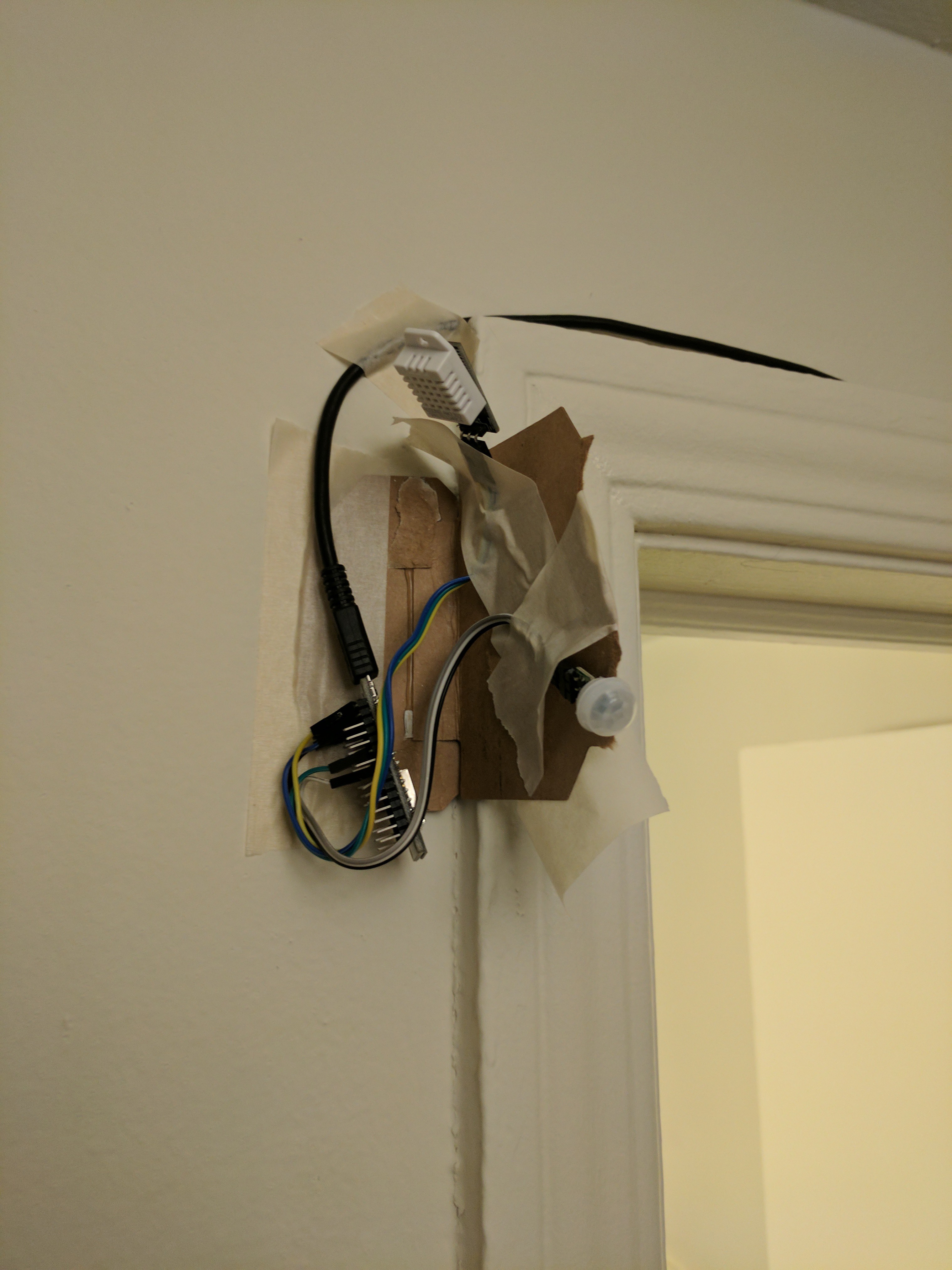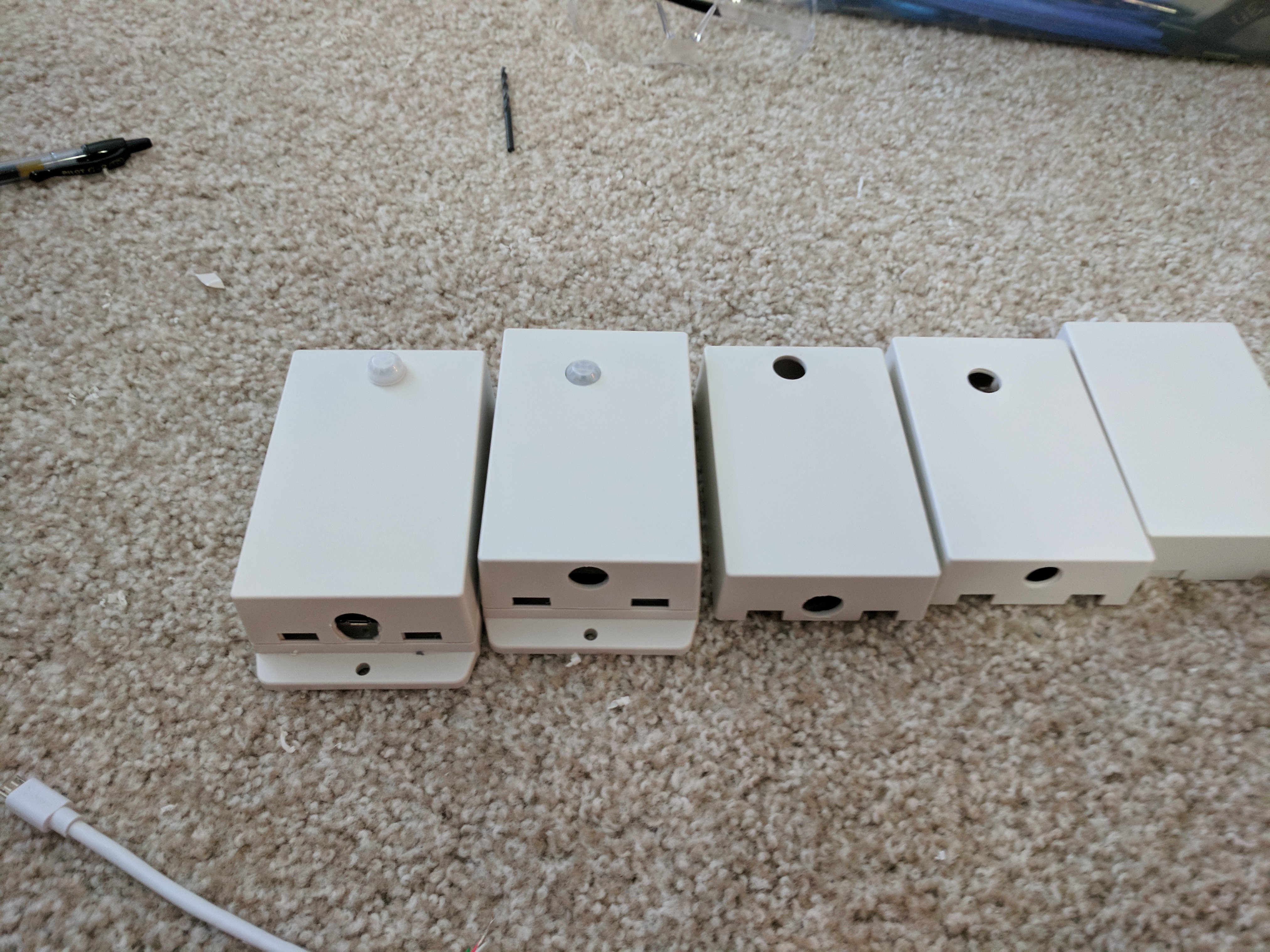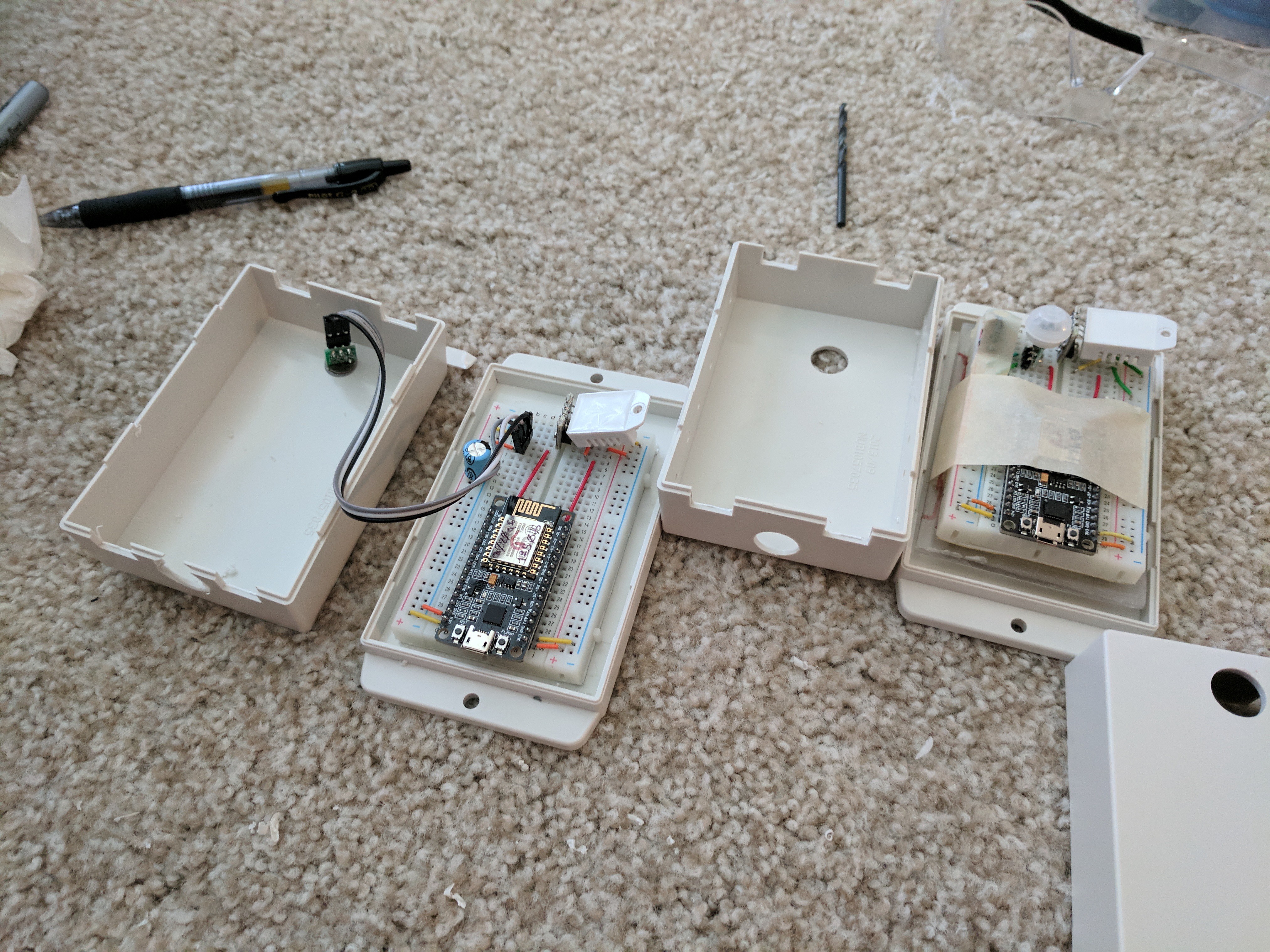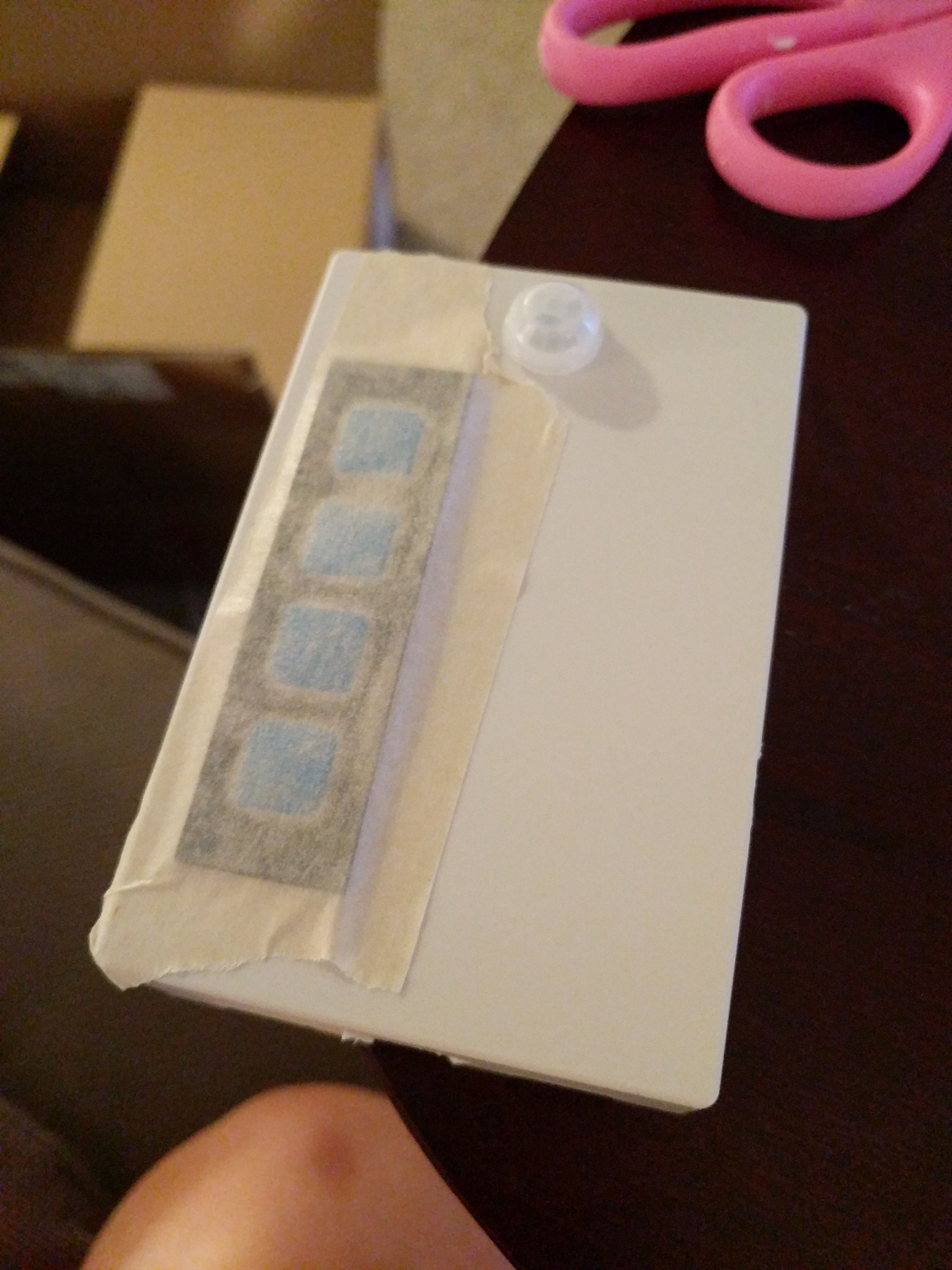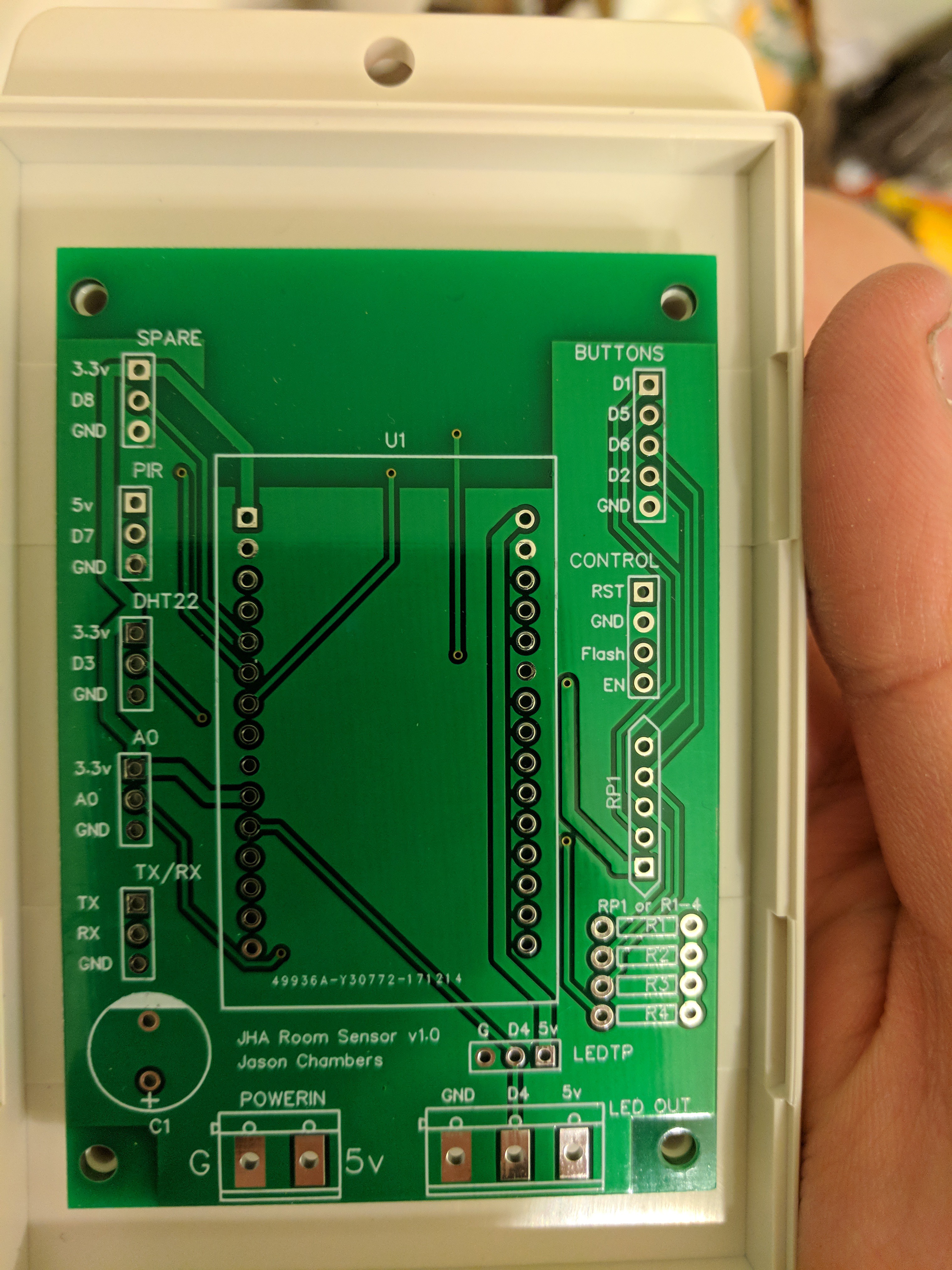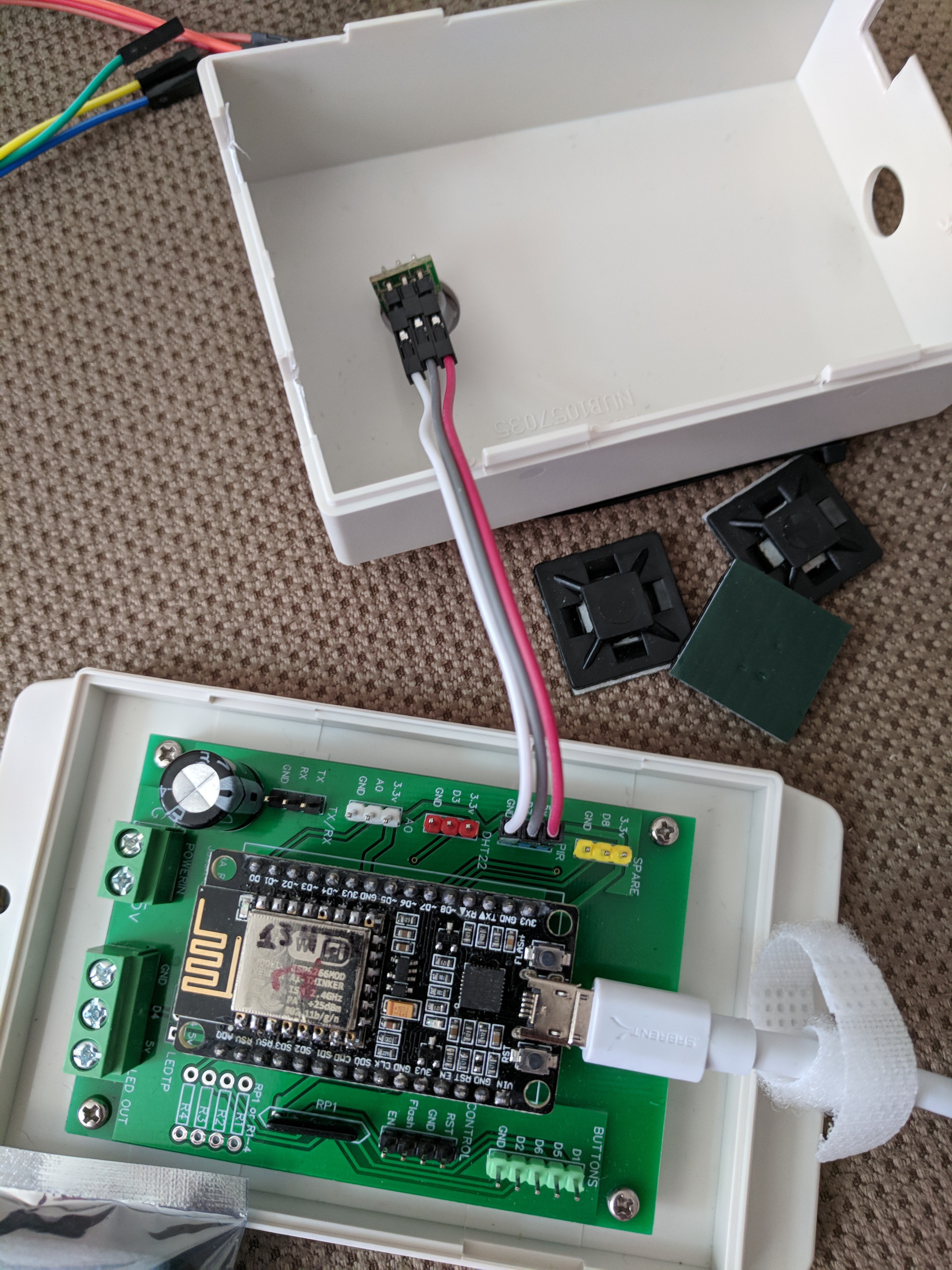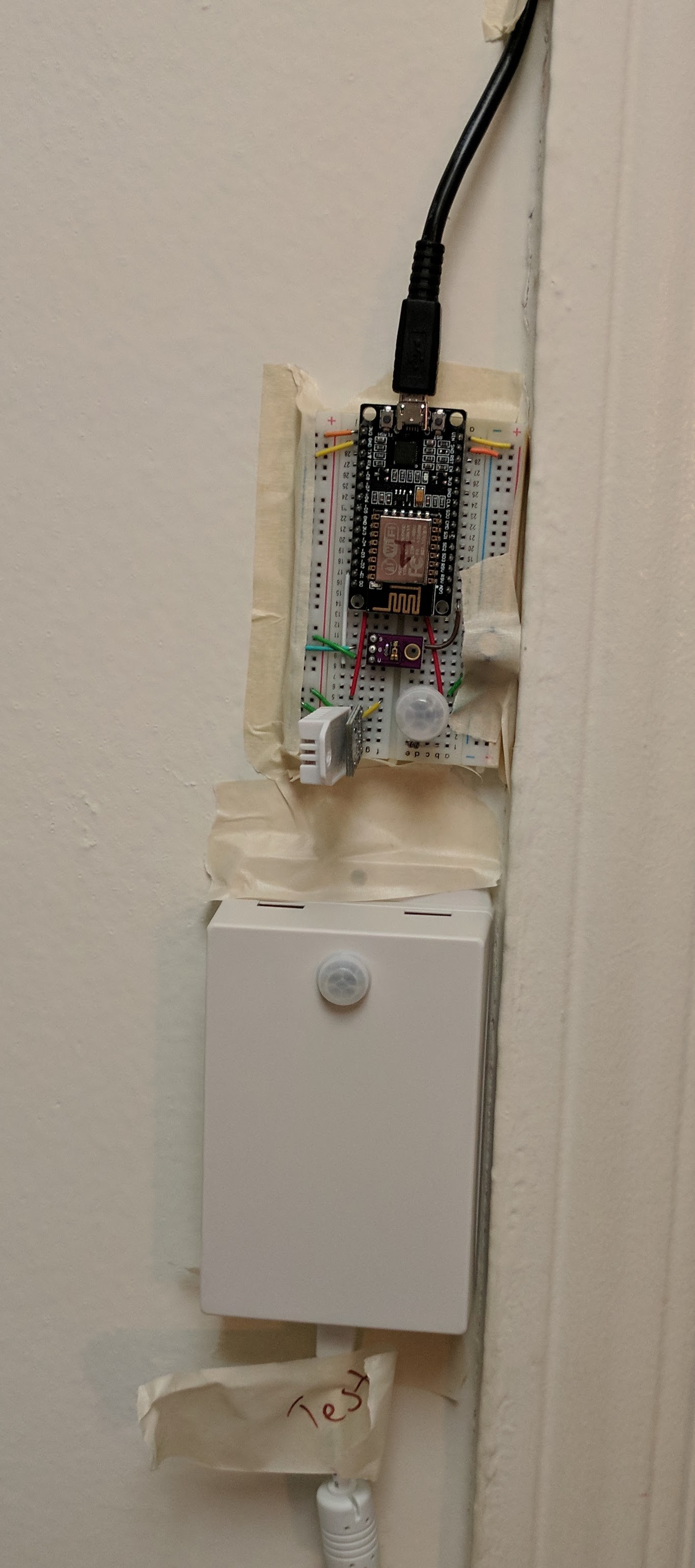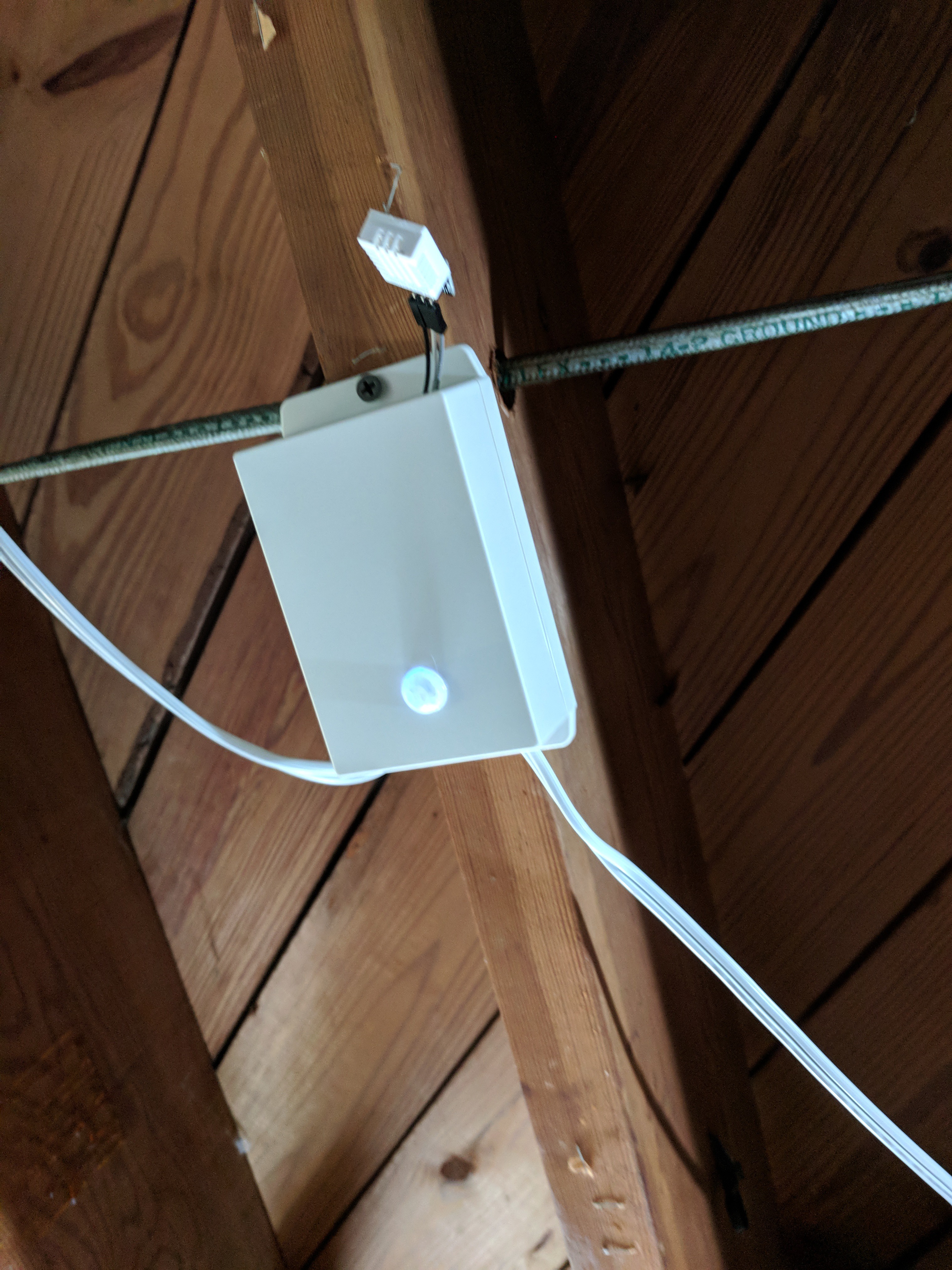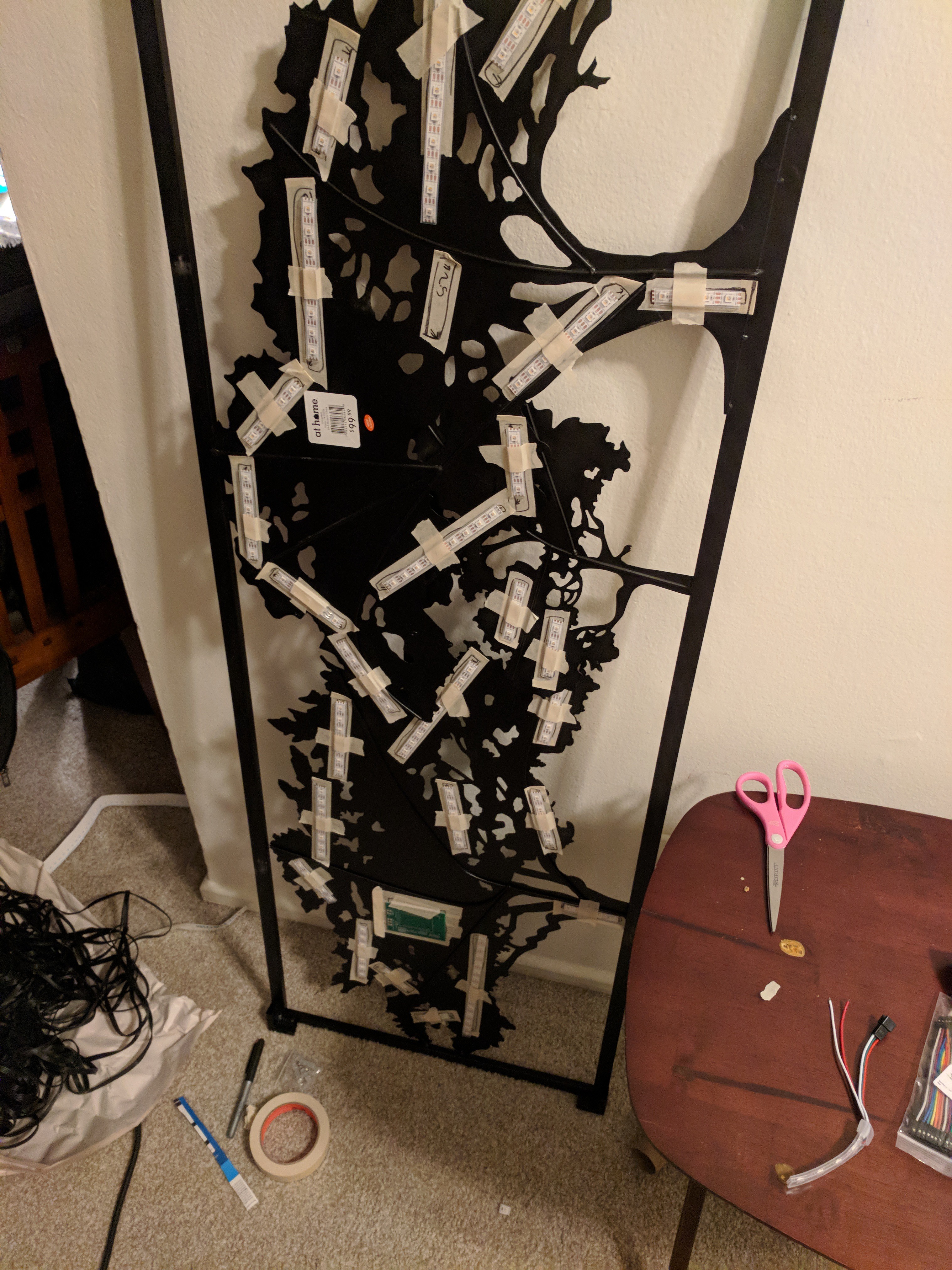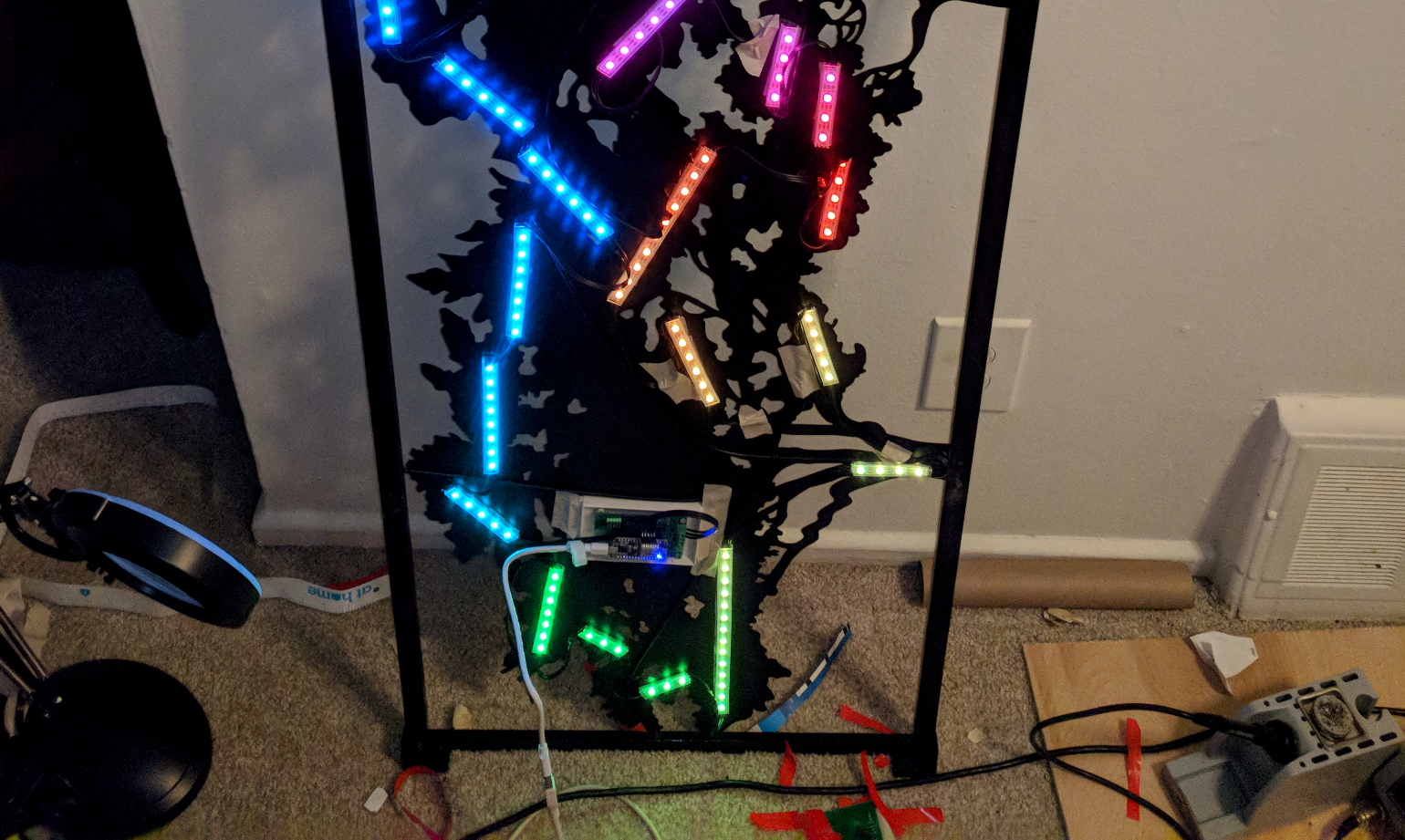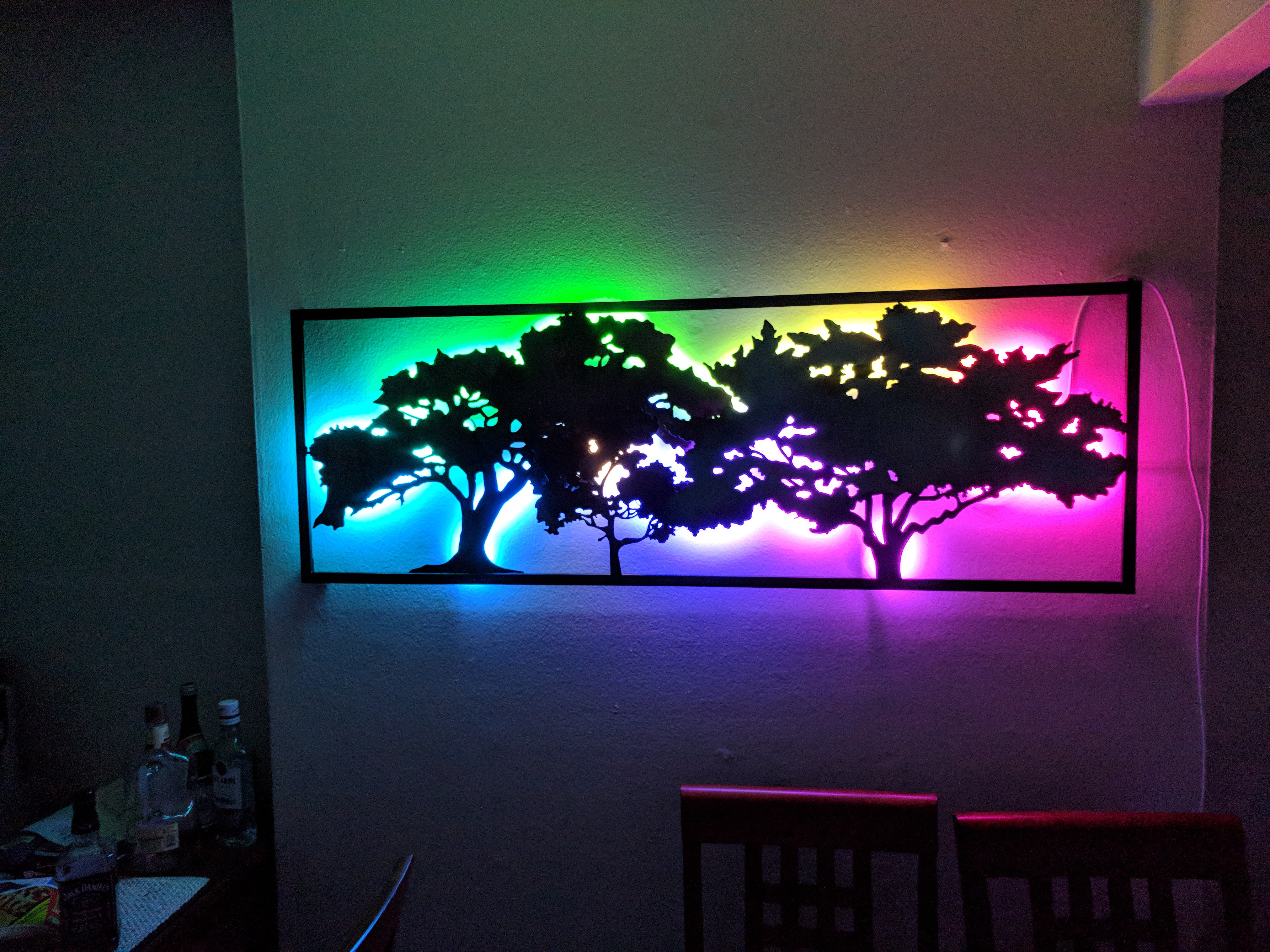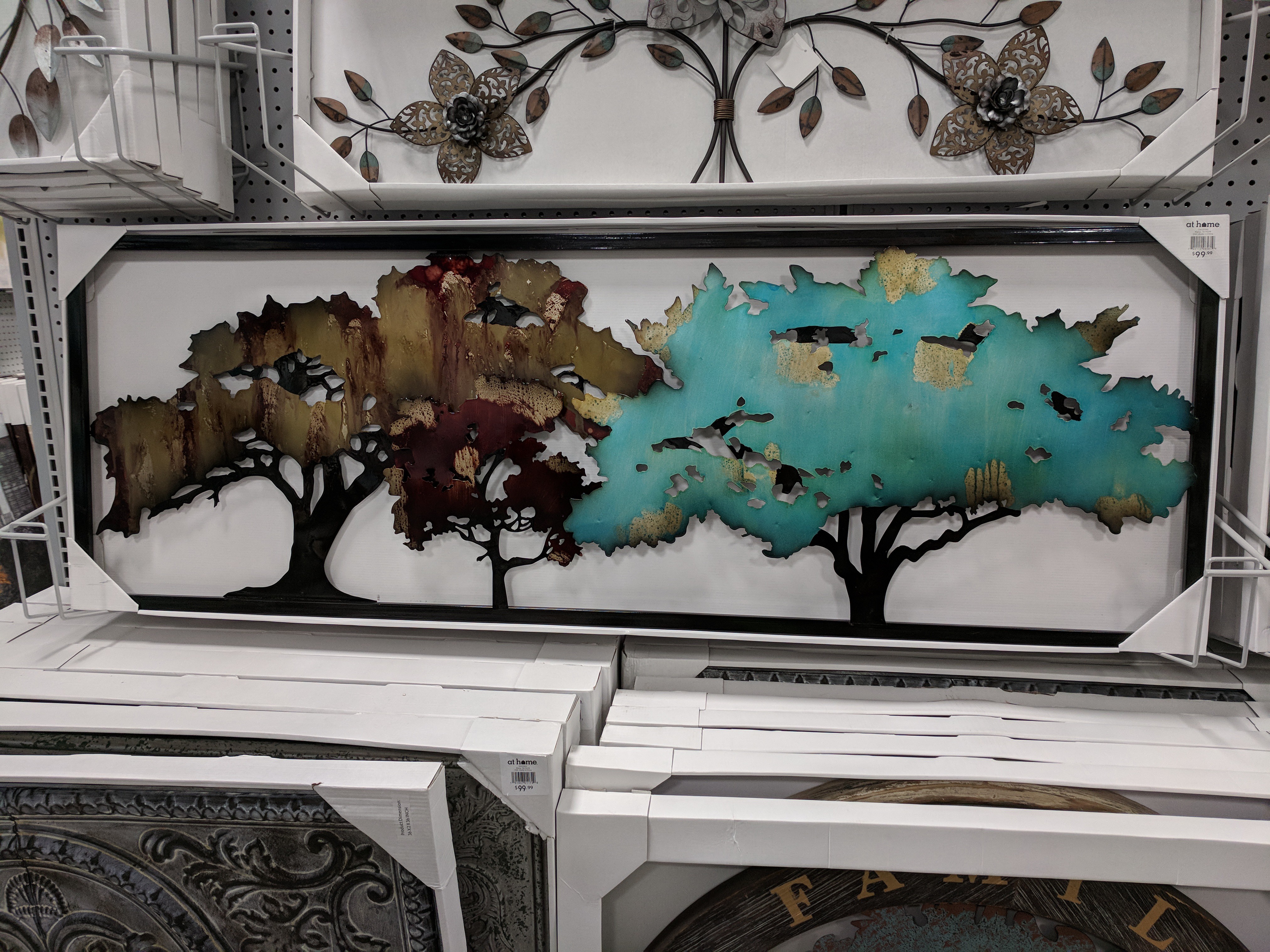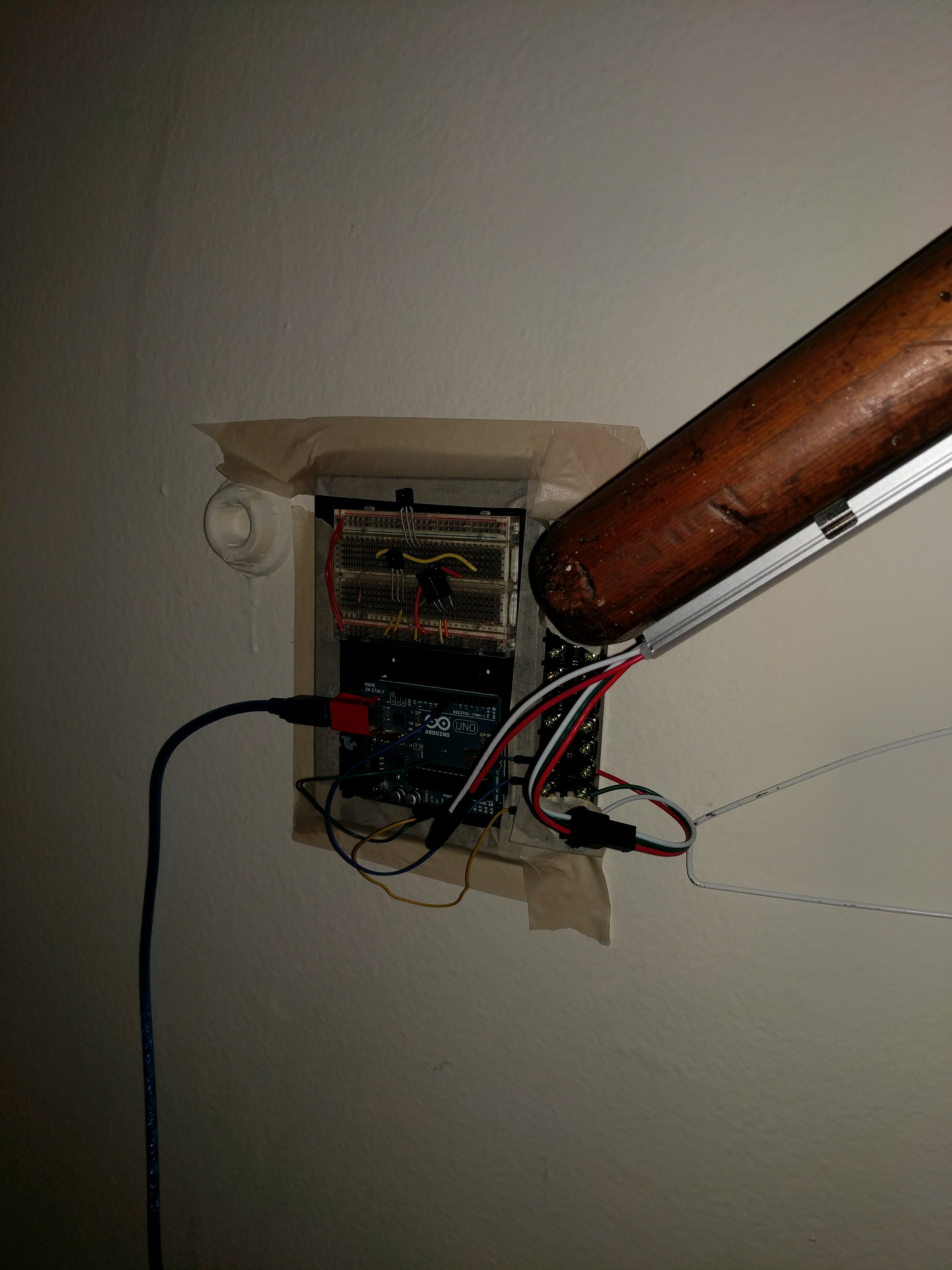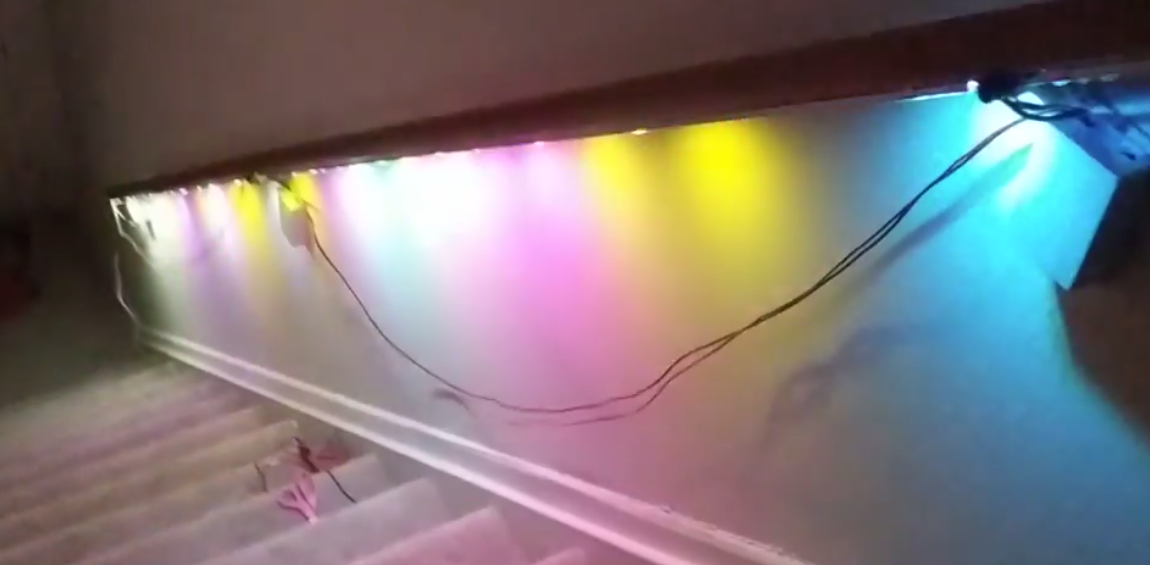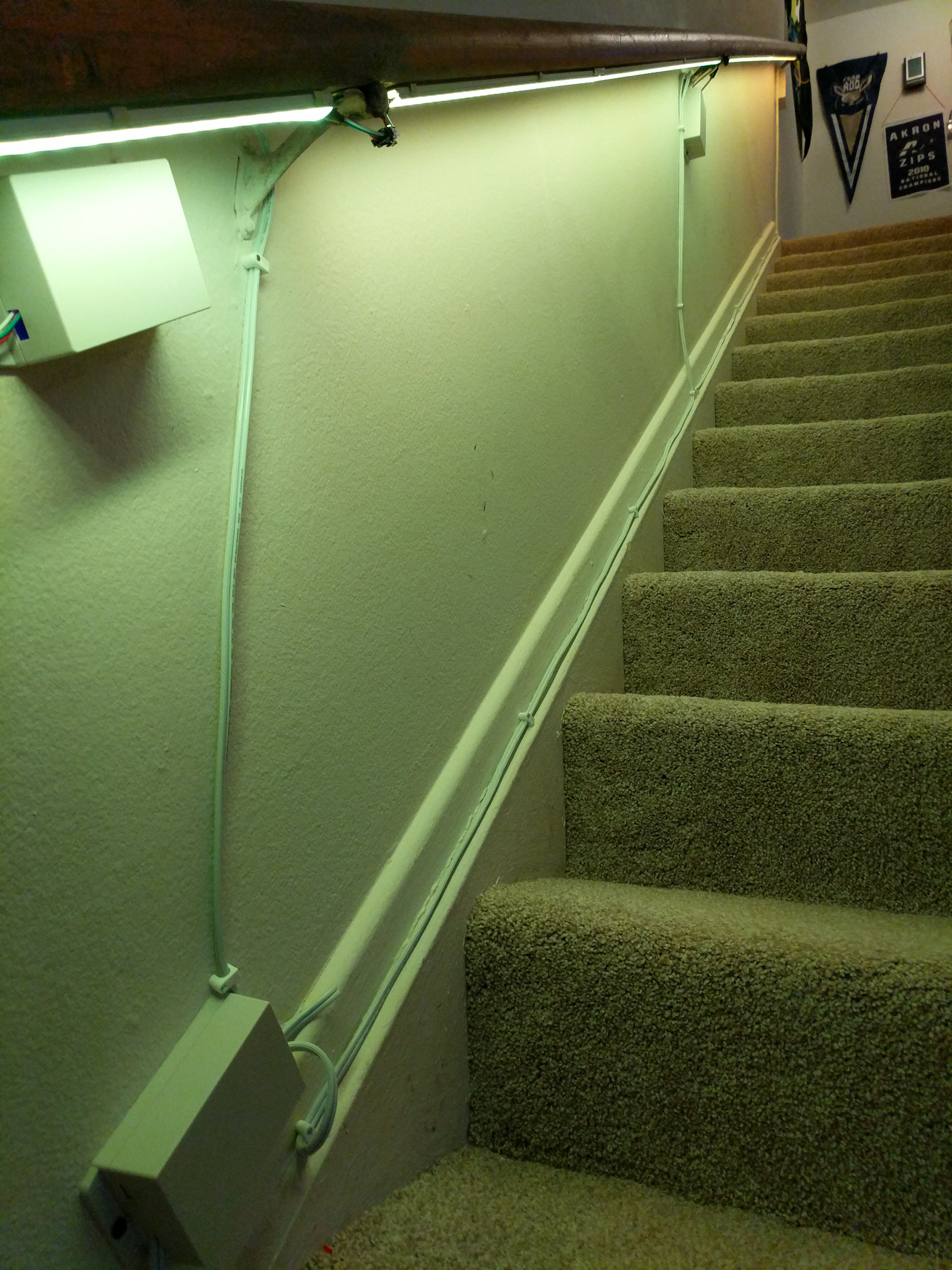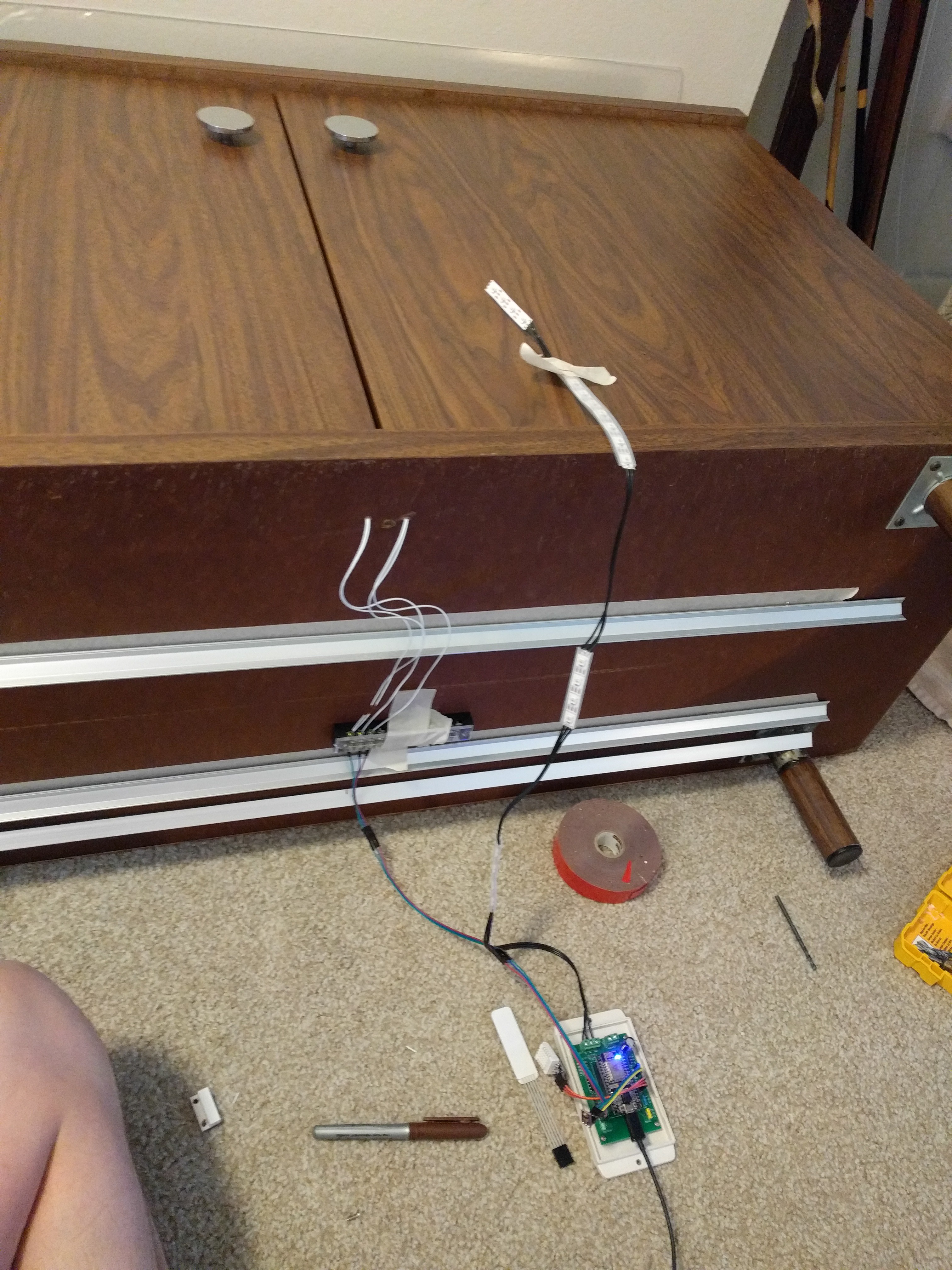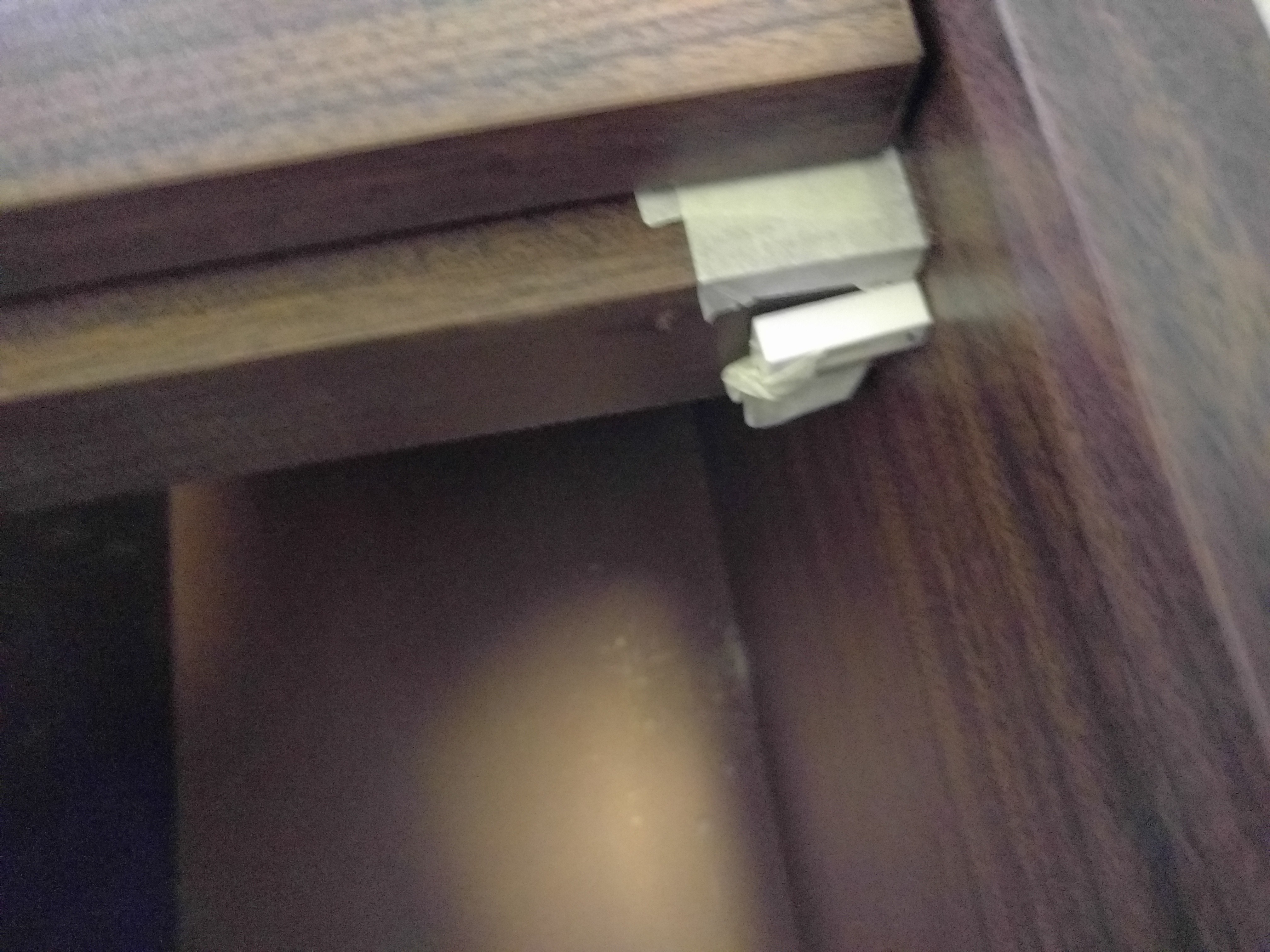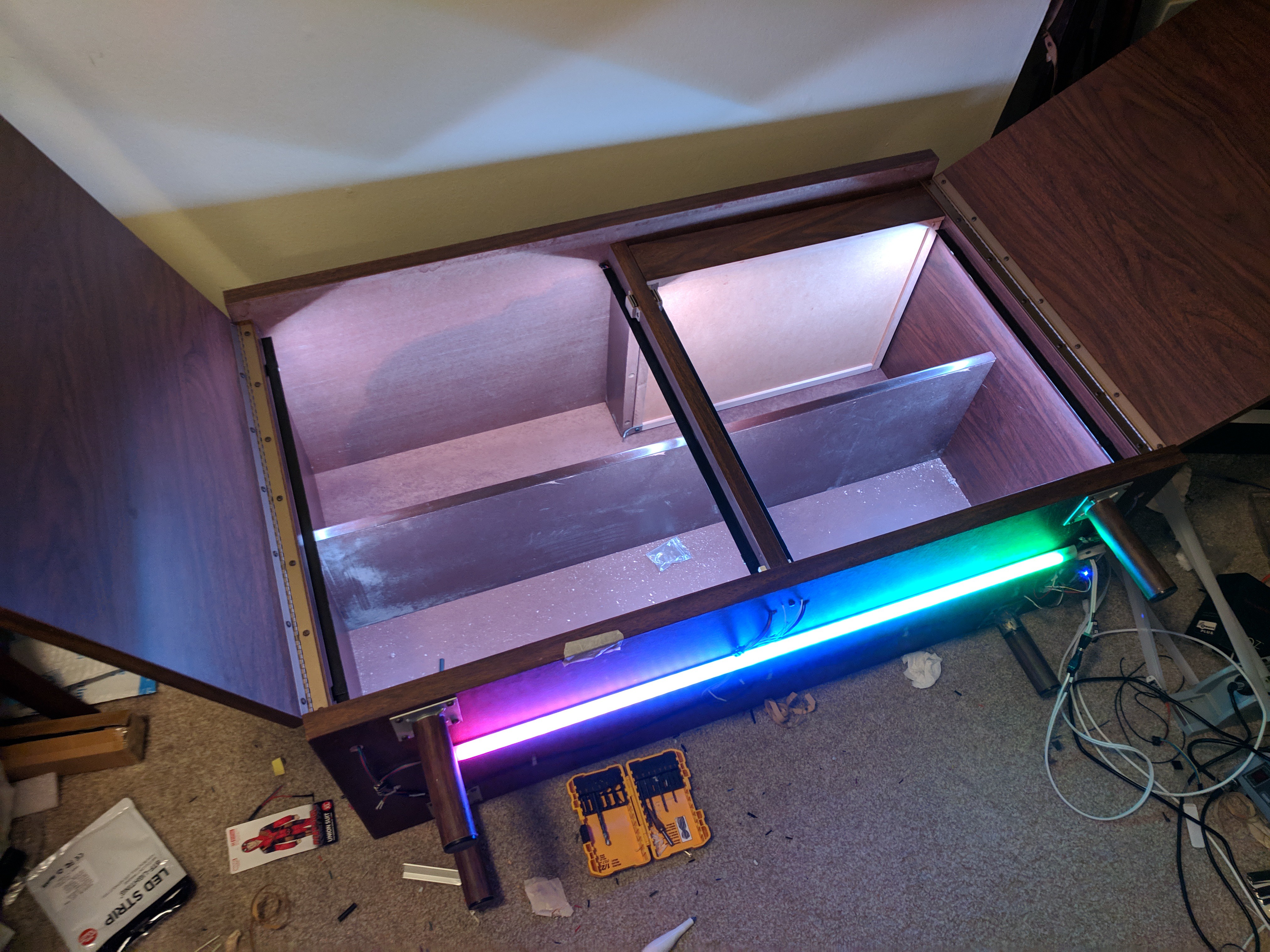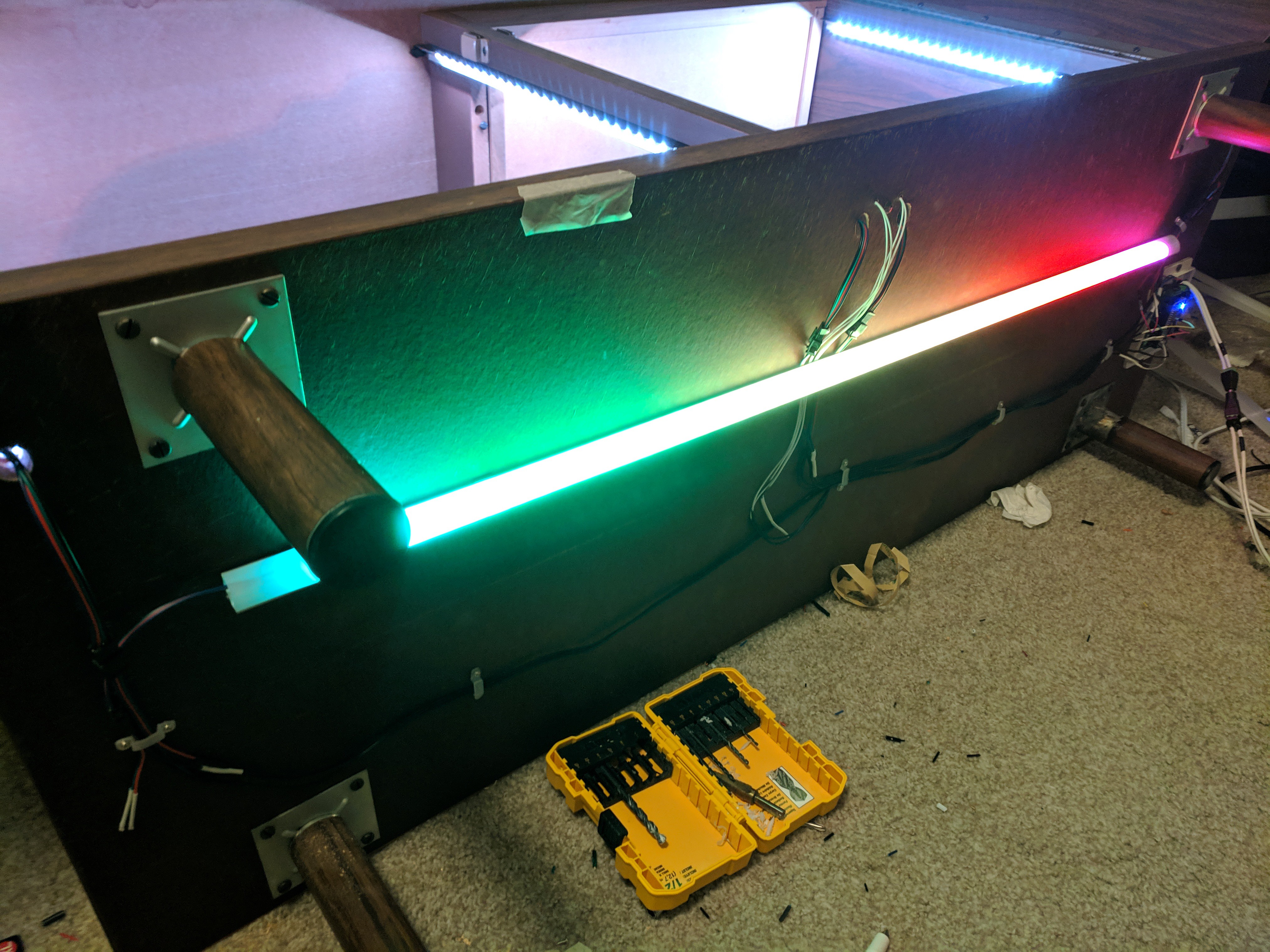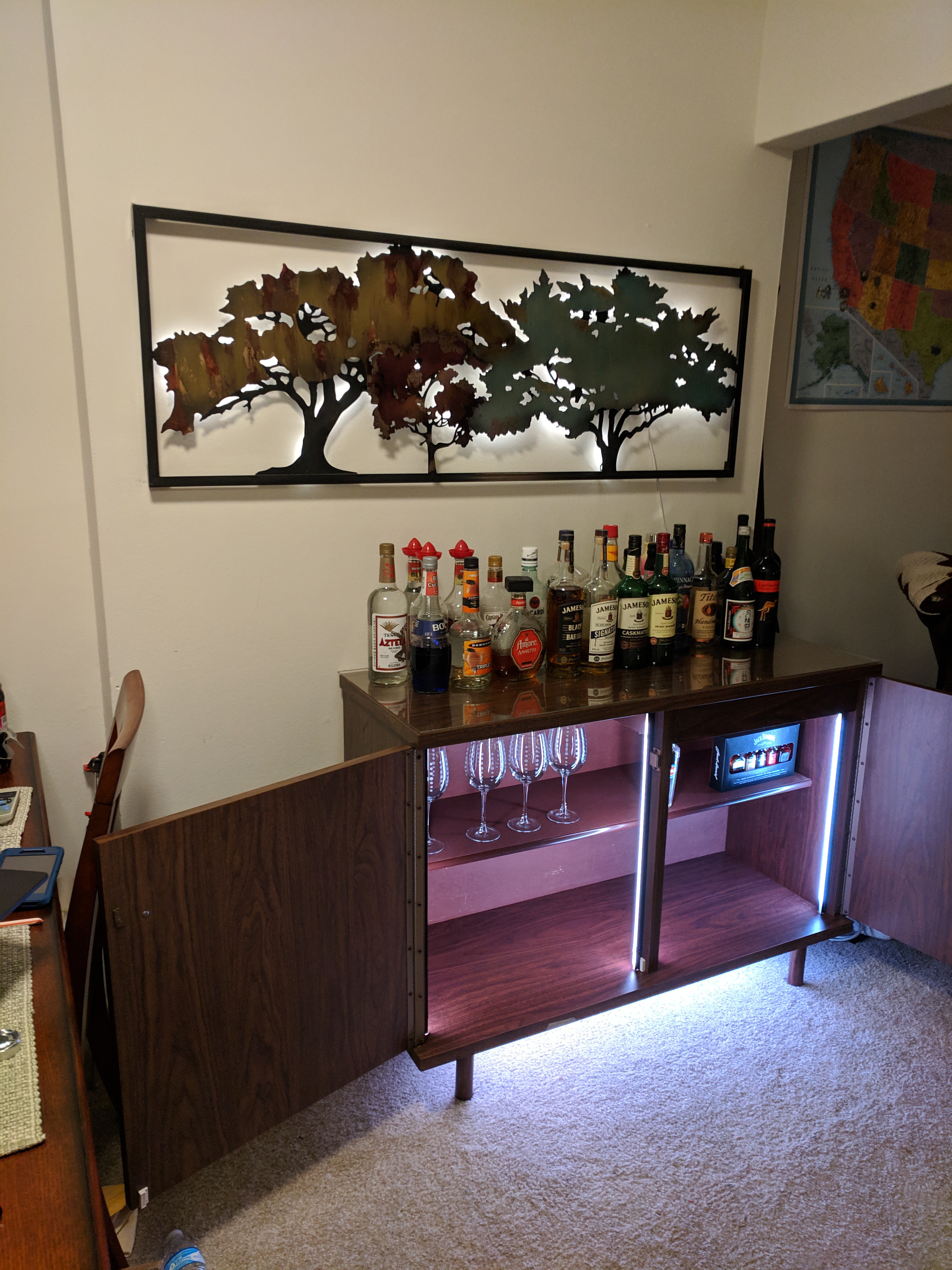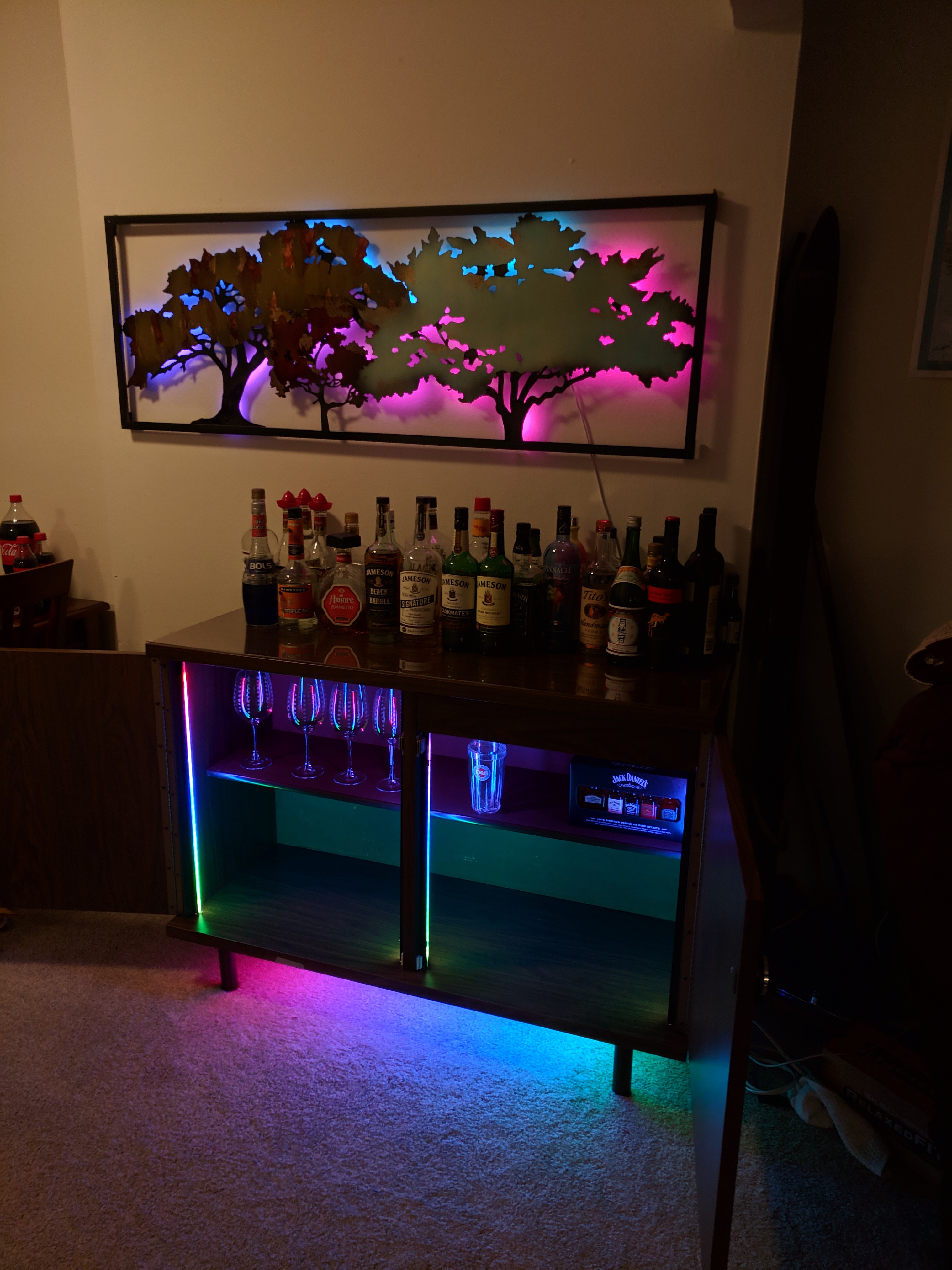-
Prototyping the Hardware
09/14/2019 at 02:45 • 0 commentsThe room seasons are built around an ESP8266 using a custom PCB that can be used in almost any home automation I could think. The sensor includes a breakout for 4 buttons for any local control, DHT22 temperature and humidity sensor, PIR sensor to detect motion, clock-less LED strip and analog input for a future light sensor or other analog input. The PCB is built around Bud Industries’ CU-18428-W case. This was chosen as I still rent and cant hid the sensors in the wall or perform major “wall surgery.”
This first prototype was tested on cardboard and mounted in my hallway to test the stability of the sensor:
![]()
I created a few case prototypes to see how the PIR and temperature sensor would enjoy living in the case:
![]()
The inside of the case was breadboards :
![]()
A test of the 4 button membrane location:
![]()
Once the PCB arrived, hole placement was verified and it was all correct!
![]()
The PCB assumed and reviving its programming:
![]()
The old test sensor mounted above the newly installed permanent sensor:
![]()
Unfortunately the DHT22 did not like living in the case. It caused the temperature to rise by an extra few degrees. Until a cleaner look can be created, the DHT22 just hangs outside the case:
![]()
-
Tree Art
09/14/2019 at 02:23 • 0 commentsAdding LEDs to things that don’t need it is something I like to see. I got this art piece at AT Home. I cut up a bunch of RGBW LED strips to allow the trees to glow. This is mounted above a dining bar that I also installed LEDs on.
The LED strips where cut and taped onto the art prior to soldering the wires:
![]()
Soldering the wires and testing with the controller:
The Art on the wall powered on:
![]()
Art still in the "box":
![]()
-
Under Stairs LED Lighting
09/14/2019 at 02:13 • 0 commentsI have always wanted to have light upstairs and thought that under the railing would work. Using U Shape LED Aluminum Channel (https://www.amazon.com/gp/product/B01M09PBYX/) and RGBW LEDs, it creates a fun mood on the stairs. While the system doesn’t have motion sensing, it mostly only turns on when the house is in party mode or movie mode. Power splicing and terminal block are hidden in additional CU-18428-W.
Part of the prototyping was using a Uno to control the LEDs test patterns
![]()
This was before the cable management was installed for power splicing:
The box in the top left hosts the ESP8266 control board, The bottom box is where the power comes in and is distributed to the next 2 boxes along the right:
![]()
-
Dining Room Bar
09/13/2019 at 22:13 • 0 commentsThe dining room bar is a fun project as it used 5 different LED strip and 2 door sensors to give the bar a fun party vibe. When in day mode the inside lights come on with just a white LED to let me see what is inside. However when the house is set to PaRtY MoDe; the cabinet uses rainbow LED patterns to make the room more fun!
The cabinet was found at an estate sale for only $20, so I was not concerned with preforming any modification to it. The LEDs are held in place by “V Shape LED Aluminum Channel System with Milky Cover” (https://www.amazon.com/gp/product/B0733NN716/) and link to my PCB board and master house PSU. The doors use a wired door magnetic switch https://www.aliexpress.com/item/32652286475.html and the automation is (mostly) controlled by the ESPHome system.
Installing the door sensors:
![]()
![]()
Installing the LEDs and cable management:
![]()
![]()
Day Mode:
![]()
Party Mode:
![]()
Just Another Room Sensor
An ESP8266 room sensor/LED controller for my Home-Assistant
 Jason
Jason